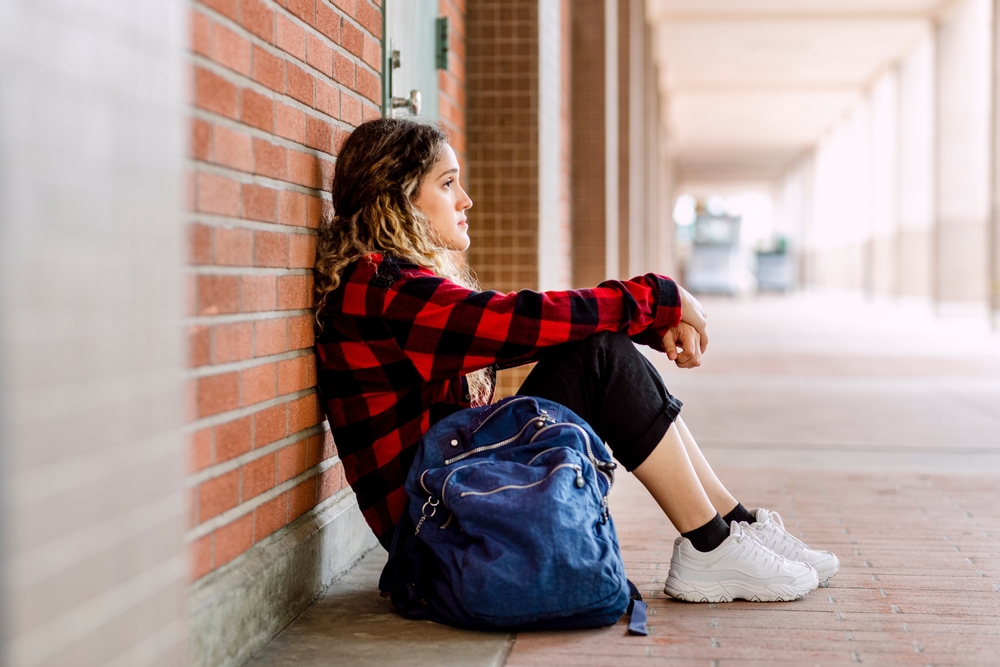Many things mark the transition from primary to high school. New uniforms, larger canteens, different classroom structures and changing friendship groups are but a few of the many rites of passage when students move into high school.
But a big change is the secondary schoolyard. To the newly minted high schooler, graduating from the playground to the playing field is an exciting step away from childhood and a leap closer to L-plates.
Secondary schoolyards fascinate me – which is why I’m writing a PhD about them. For the past three years, I have interviewed and surveyed students, principals, and designers to understand whether these spaces are meeting the well-being needs of our older youth.
At a time when student mental health is declining, research indicates that spending time outside can do a body good. The schoolyard provides a daily dose of green space. But it’s questionable whether their designs provide the types of outdoor spaces students want or need – particularly as its design brief has barely changed over the past forty years.
And just as you won’t find me typing my thesis on a Remington typewriter while wearing bell-bottom trousers and listening to a disco record, outmoded design standards have no place in an era of Covid and climate change.
During my research, “There is nowhere to go” and “It’s boring” have been some of the more frequent schoolyard complaints students shared with me. But what I didn’t expect were the parents’ reactions to girls entering high school. “My daughter stopped playing sport at recess,” shared one mother. “Girls in dresses can’t do cartwheels,” said another.
One Year 8 boy affirmed the parent concerns I was hearing. “All the boys play footy and handball and the girls don’t really do that.”
Growing evidence indicates that as students age, differences emerge in how boys and girls engage with schoolyard space. Some attribute this to badly designed schoolyards, where a sport-dominated focus and lack of natural diversity create a lack of desire to use them.
In their 2023 study looking at recess behaviours, Marcella Raney and co-authors found that in less diverse schoolyards, boys remain interested in the sports programming of ovals and ball courts while older girls lost interest, opting to be more social and sedentary. Focus group discussions with girls reveal feelings of exclusion by boys and a lack of attraction to schoolyard elements.
Our own research affirms these trends. Our survey of 284 students in years 7 to 10 at one Canberra school revealed the schoolyard to be more aligned with the preferences of boys, but desired little by girls. Between years 9 and 10 alone, girls recorded a 31 per cent decrease in schoolyard likeability (compared to a drop of 6.5 per cent for boys). In fact, girls are more negative than boys in their perceptions of schoolyard accessibility, likeability and personal connection.

One of the submissions from the “The Schoolyard I’d Like” competition. Maze and fountain: Ellie (15), Jenna (16) and Sophia (15). Picture: Supplied
Adolescence plays a contributing role in some of these trends. Girls demonstrate worsening mental health compared to boys, with these disparities often continuing into adulthood. Changes to body image and self-esteem during puberty are attributed to increasing student reluctance to participate in traditional sports programming due to a lack of physical skills and confidence. But this doesn’t mean that time outside is any less valued, as one female Year 9 student shared with me. “I don’t like school in general,” she said. “But if I went out for a bit, it changes my mood somewhat. So I don’t disrespect anyone else. I just disrespect myself.”
Given the well-being benefits afforded by time outside, girls have potentially more to gain from improvements to schoolyard spaces. But this means exploring alternatives to the sport-heavy models, where big money spent on big grass ovals may come at a big cost of minimizing schoolyard choices for girls.
The question of how to best meet the schoolyard needs of girls is one that continues to stump designers, managers, and researchers. The answers are there – but we need additional voices at the table. Students are schoolyard experts, and their ideas are many.

One of the submissions from the “The Schoolyard I’d Like” competition. Gazebo design: Amber (15) and Sabrina (14). Picture: Supplied
In 2021 my student ideas competition The Schoolyard I’d Like captured teenage visions of the ideal secondary schoolyard. From Versailles-inspired mazes and oversized play structures to intimate landscape ‘pods’ and gazebos for hanging with friends, students sought spaces that promoted relaxation, imagination and meaningful connection with each other. While all entrants desired spaces that were fun and exciting, entries from boys focused on active play while schemes from girls were more driven by comfort, respite, learning and nature. The competition illustrated the need to further understand these differences in schoolyard perception and use.
Our surroundings teach us about society and how our lives fit within it. The way in which we design, occupy, and use shared spaces such as the schoolyard teaches us about our relationship with the environment – and with each other. When I asked older female students where they like to go in the schoolyard, I frequently heard a similar response to what one Year 9 student told me: “Me and my friends sit on the basketball court…just on the edge, so the boys can still play football.”
The time has come to move beyond the vintage schoolyard, its conventional play choices and social hierarchies. To a world where schoolyard choices are not about playing soccer or sitting on the sidelines but offering a broad range of environments and experiences to reflect and celebrate the rich diversity, skills, and interests of its students – both boys and girls. Are schoolyard designers ready? Game on.
- Please note: Picture at top is a stock photo
Gweneth Leigh is a graduate of the Harvard School of Design and a final-year PhD student at the University of Canberra Health Research Institute.





